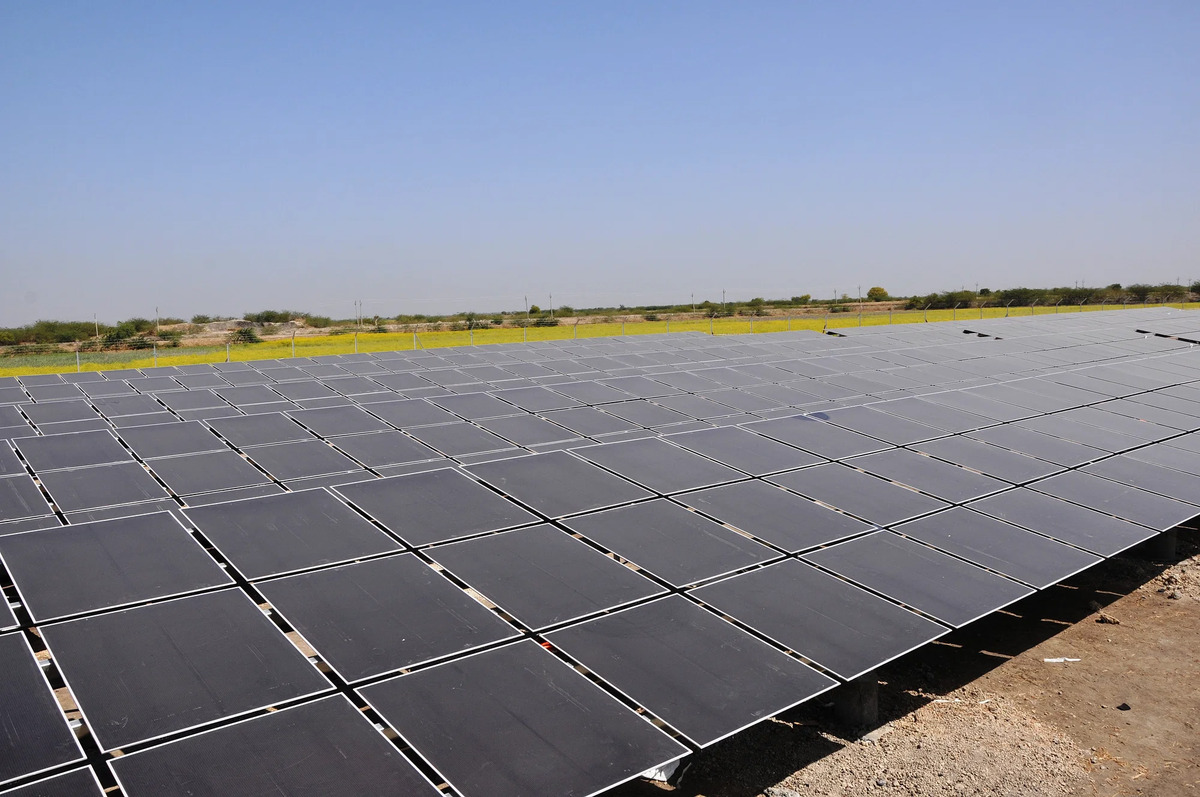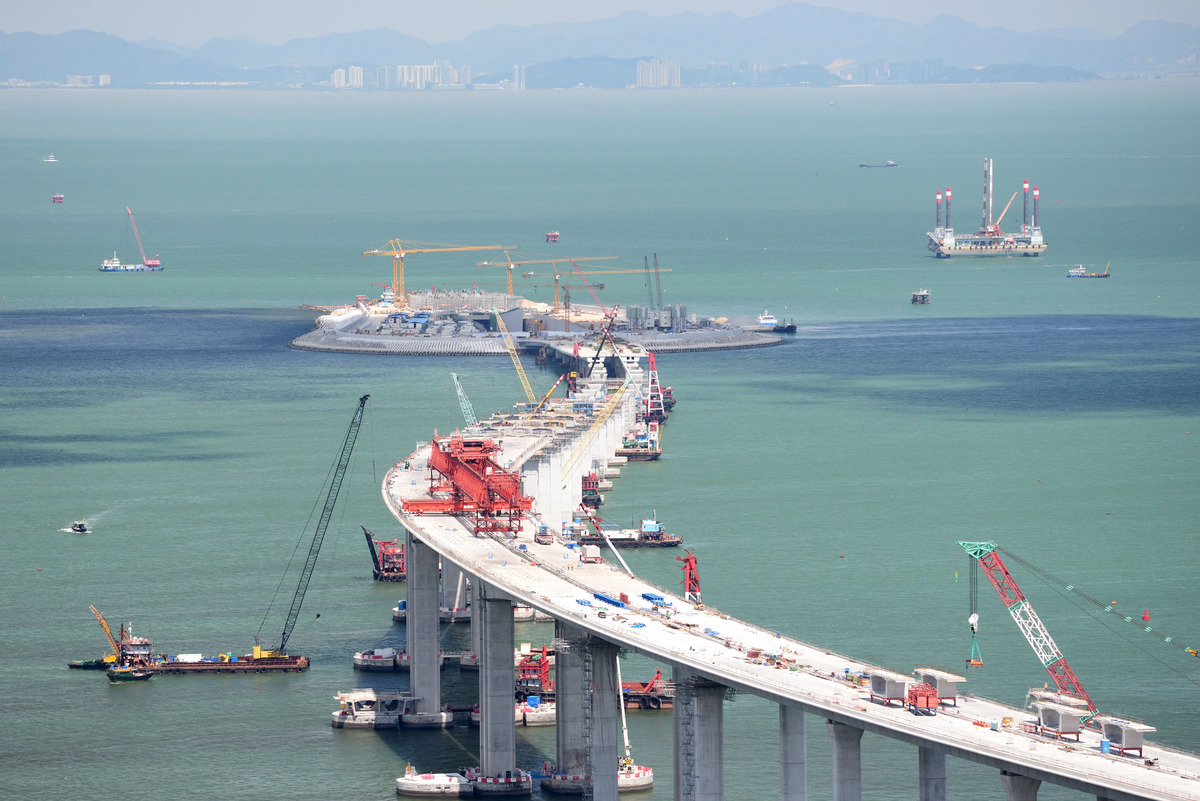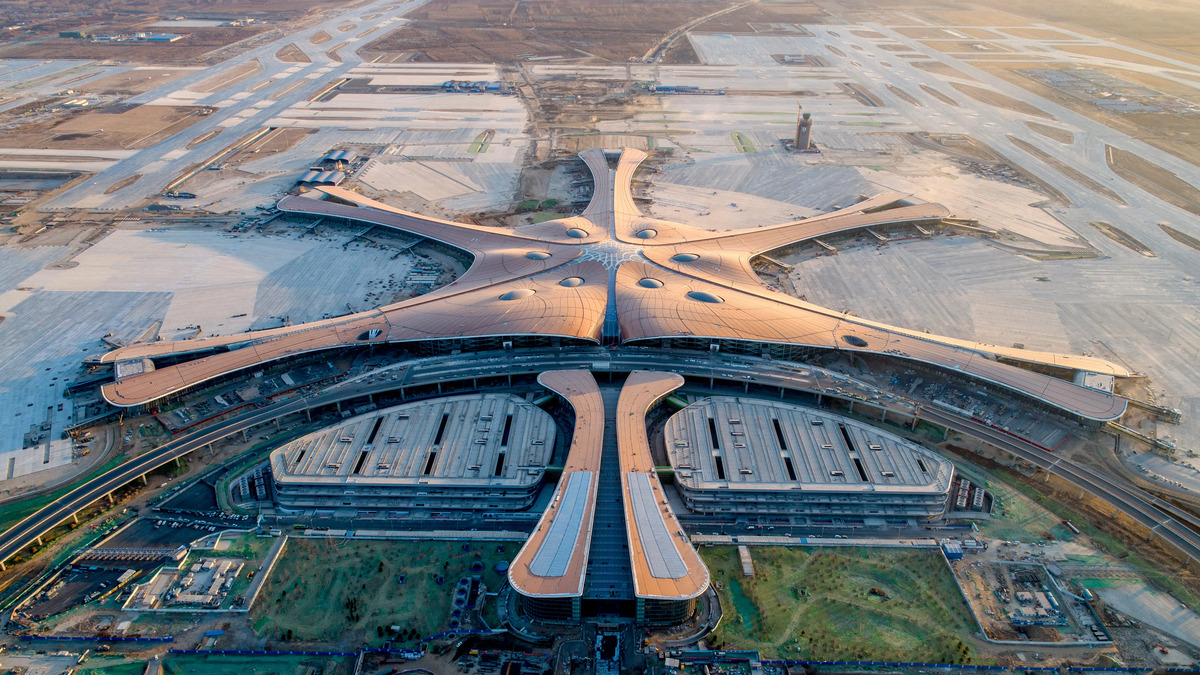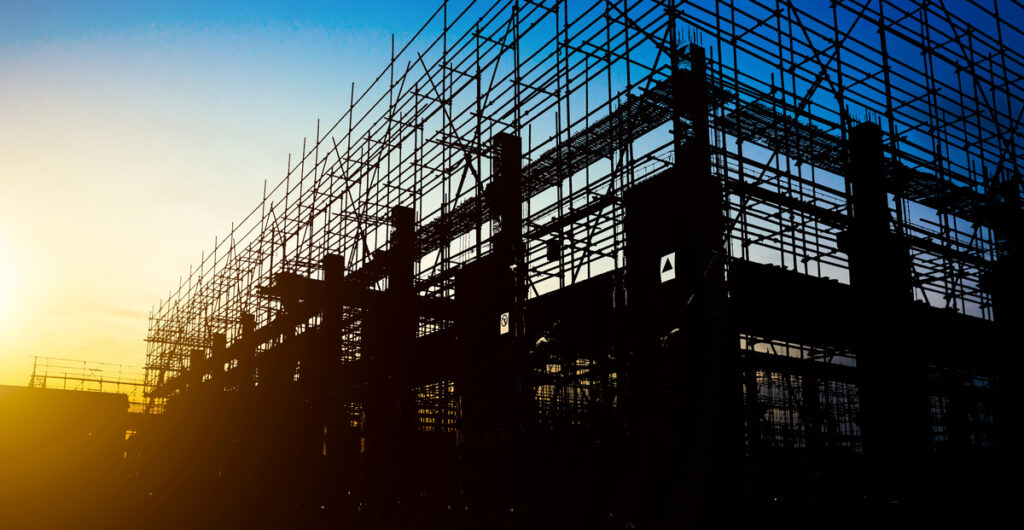Exclusive Neuroject Article: Urbanization becomes a common tendency as the world’s population continues to increase, increasing demand for cutting-edge infrastructure and massive construction projects that reshape the planet’s surface. We observe an extraordinary increase in the scope and complexity of construction projects in 2025, demonstrating humanity’s amazing engineering prowess. These initiatives reinvent what is possible for humans, from breathtaking skyscrapers that reach the heavens to huge transportation systems that link continents.
In this article, we examine the top 17 largest construction projects in the globe by size in 2025, highlighting their ground-breaking nature and the profound effects they will have on both the local communities in which they are located and the entire planet. These ambitious mega projects span a range of industries, from energy and transportation to urban planning and entertainment, and each has made a substantial contribution to the economic, social, and technological advancement of the host countries.
We take you on a tour of the world’s most daring engineering achievements with an eye for the extraordinary. We provide a thorough analysis of each project’s scope, difficulties, and potential long-term effects on the populations they serve and the environment they interact with, drawing on significant research and trustworthy references.
Table of Contents
Introduction to Construction Projects
Construction projects shape our skylines, infrastructure, and communities in the modern world and are vital to progress. Mega construction projects play a crucial role in turning ideas into physical realities, from soaring skyscrapers to complex transit networks and sustainable urban developments. But there are many complexity, difficulties, and moving elements along the way from concept to completion that call for experienced management and careful navigation.
This article explores the complex world of building projects and offers insights into the complexities required in carrying out these challenging projects successfully. We will examine the essential components of construction projects, from the preliminary stages of planning and design to the actual building process and project delivery.
The significance of construction projects in economic growth cannot be understated. Investment in construction activities has far-reaching effects, stimulating job creation, fostering innovation, and driving economic development. As such, governments, private investors, and stakeholders are keenly invested in the successful execution of these ventures.
Throughout this article, we will draw upon credible sources and expert perspectives to shed light on the best practices, emerging trends, and industry standards that govern the world of construction projects. By referencing reputable journals, reports, and case studies, we aim to provide a comprehensive understanding of the challenges faced, the solutions implemented, and the lessons learned from a diverse array of construction projects.
Suggested article to read: 2025 Construction Forecast: Key Trends to Watch
1. NEOM City
Location: Saudi Arabia
Total Cost: US $500 billion (£371bn)
Neom is a sizable region of Saudi Arabia that has been designated for development as a result of an effort by crown prince Mohammed bin Salman, who serves as the country’s de facto ruler. Neom is sometimes referred to as a “smart city,” although it is a territory that will house multiple cities, resorts, and other developments.
The Public Investment Fund, which makes investments on behalf of the Saudi Arabian government, is providing the majority of the funding for the construction project. According to Nadhmi Al-Nasr, CEO of the Saudi development business founded to build Neom, the fund is putting $500 billion into the program. It is a component of the Saudi Vision 2030 plan to diversify the economy and lessen reliance on oil.
Suggested article for reading: Construction Project Management

2. The Gulf Railway
Location: Bahrain, Kuwait, Oman, Qatar, Saudi Arabia, and the United Arab Emirates (UAE)
Total Cost: US$250 billion
With major advancements being made in the development of regional railroads in recent months, the GCC Rail appears to be taking shape. As the GCC economies look to open up a new stage of urban growth, rail projects are once more attractive as investments.
Infrastructure development is also supported by improved oil receipts and market fundamentals over the previous year. The GCC Rail network, which is expected to span more than 2,000 kilometers, is expected to grow at varying rates in each of the six member nations.
According to reports, the first segment of the Riyadh Metro will debut in March 2024. According to reports, the last operation will occur before the year is over. Additionally, the UAE’s rail projects have made progress. Earlier in February, the UAE National Railway Network was introduced.
Suggested article for reading: Construction Risks

3. Dholera Solar Power Plant
Location: India
Total Cost: $169m
One of the biggest solar power plants in the world is the Dholera Solar Power Plant in Gujarat, India. It has a surface area of 11 square kilometers and a 700 MW capacity. Adani Green Energy constructed the facility, which makes use of a combination of fixed and tracking solar panels to maximize daytime solar energy production. A central inverter system, which is connected to the rows of panels, transforms the direct current (DC) that the panels produce into alternating current (AC), which can then be sent into the grid.
Numerous difficulties were encountered during the engineering of the Dholera Solar Power Plant, including the necessity to move and install tens of thousands of solar panels, inverters, transformers, and other pieces of machinery over a huge area of unlevel ground. The project team surveyed the site and planned the layout of the facility using cutting-edge geospatial technology to overcome these difficulties.
To make it easier to transfer large pieces of machinery and materials, they also constructed a network of highways and tracks. Additionally, they used cutting-edge technologies to decrease water use and optimize energy output to construct the plant to be extremely efficient with minimal environmental impact.
Suggested article for reading: Digital Transformation Technologies in Construction

Source: SWARAJIA
4. King Abdullah Economic City
Location: Saudi Arabia
Total Cost: US$100 billion
The King Abdullah Economic City, the greatest development project in the Kingdom, has embraced a contemporary architectural style to become one of the most significant economic cities in the world. It will take around 20 years to build the City, which will house close to two million people. Beginning in 2006, the construction project is anticipated to be completed in 2025.
The initial stage lasts for five years, from 2006 to 2011. A seaport, an industrial zone, a central business district, a resorts and facilities area, residential neighborhoods, and scientific and research institutions will all eventually be a part of the KAEC.
King Abdullah bin Abdulaziz Al Saud first launched King Abdullah Economic City in Saudi Arabia in 2005 at an estimated cost of USD 100 billion. Since then, the city has advanced significantly, with the completion of residential sections, commercial spaces, and transportation infrastructure.
Suggested article for reading: Digital Transformation

5. Madison Square Garden Sphere
Location: Las Vegas
Total Cost: $2.3 billion
The Madison Square Garden (MSG) Sphere is a massive, sphere-shaped stadium that is currently being built at The Venetian Resort in Las Vegas. Inflation has caused the total cost since construction projects began to soar by 9%, up to an estimated $2.18 billion. The project is still on target to complete completion in the second half of 2024 despite the cost overruns.
The sphere, which can accommodate 20,000 guests and includes 23 VIP suites, will undoubtedly boost the State’s tourism industry’s bottom line. To provide high-resolution visuals that can be seen from a great distance, MSG Entertainment intends to install wrap-around LED displays on both the interior and exterior of the sphere. To give guests an immersive experience that draws crowds from all over the world, the interior features a spatial sound system and immersive 4D technology.
Suggested article for reading: Construction Industry Trends

6. Al Maktoum International Airport
Location: Dubai
Total Cost: $33 billion
Al Maktoum International Airport is expected to be the biggest airport in the world when it is finished, according to urban planner and developer Dubai South.
“#DubaiSouth will be home to the world’s largest airport once complete, and a multi-modal transport infrastructure linking air, land, and sea. Along with the advantages of a business-friendly free zone, it will also provide a diverse range of residential options,” Dubai South said via Twitter.
The airport, a $33 billion facility, opened in 2010 for cargo operations and in 2013 for passenger flights. By 2050, it hopes to surpass all other airports in the globe in terms of passenger volume, with a capacity of up to 255 million per year. The initial phase will expand the airport’s capacity to 130 million passengers annually when it is finished in 2030.
A total area of 56 square kilometers will be covered by the project. To relaunch the project, which would significantly benefit Dubai’s economy, discussions are now under process. The prospects for development have improved due to the uptick in traffic, with Dubai International handling 66.1 million passengers in 2022.
Suggested article for reading: Smart Sensor in Construction

7. Jubail II
Location: Saudi Arabia
Total Cost: $80 billion
When finished in 2016, Jubail Industrial City, which was constructed more than 30 years ago, would double in size. Jubail II, which will cost $80 billion for infrastructural improvements alone, will be the biggest infrastructure projects in the world. The creation of Jubail Industrial II, a multibillion-dollar industrial city, aims to improve society and support the petrochemical sector. By 6,200 hectares, this project will increase the size of the Jubail Industrial City.
Jubail to Dammam would be connected by a six-lane motorway in the proposed transportation system. This roadway is regarded as the project’s primary commercial region, resulting in a solid and effective communication system across all project components. To connect the project’s smaller towns and regions, numerous roads and trails have been built. During the building period, more than 530 miles and 60 bridges were constructed altogether.
Suggested article for reading: AI in Construction

8. Dubailand
Location: Dubai
Total Cost: $64.3 billion
DubaiLand was first announced in October 2003 and has been variously referred to as “the world’s largest leisure and entertainment destination” or “the Disneyland of the Middle East.”
Between Sheikh Mohammad bin Zayed Road and the desert, the 107-square-mile plot is located inland from Palm Jumeirah. There are 50 visitor attractions spread over 26 development projects in the master plan. The biggest four projects are the themed residential communities Arabian Ranches, Dubai Sports City, Falcon City of Wonders, and Golf City.
If you assume DubaiLand is equivalent to Disneyland, the alleged attractions may not be what you might anticipate. For instance, in Sports City, the Formula One racing track and the Olympic-caliber sports stadiums are attractions for both tourists and anyone looking to invest in real estate or live there.
Pundits, investors, and bloggers have been calling for at least one significant theme park since the Dubailand project began 12 years ago (at the time of writing), but despite years of promises from the developers, none has yet been created.
Suggested article for reading: Construction Monitoring

9. International Space Station
Location: Space
Total Cost: $150 billion
The International Space Station has a surface area the size of a football field and weighs about 400 tonnes. The Space Station could not have been built on Earth and then launched into space all at once since no rocket is large enough or powerful enough to do so. To circumvent this issue, the Space Station was transported into orbit, 400 km above the Earth’s surface, piece by piece, and assembled there over time. More than 40 missions were needed for this assembly.
The International Space Station is the greatest international cooperation venture in science and technology and is a partnership of European nations (represented by ESA), the United States (NASA), Japan (JAXA), Canada (CSA), and Russia (Roscosmos).
Suggested article for reading: Smart Construction

10. South-North Water Transfer Project
Location: China
Total Cost: $62 billion
The largest project of its kind ever undertaken is the South-to-North Water Diversion Project in China. To feed the parched north with water, the project entails taking water from southern rivers.
It has already taken 50 years for this enormous project to get started, and the construction project is predicted to take almost as long. It will eventually redirect 44.8 billion cubic meters of water annually to the urban areas in the drier north when it is finished in 2050.
Three diversion routes must be built, spanning the eastern, central, and western regions of the nation from south to north, to connect China’s four major rivers, the Yangtze, Yellow River, Huaihe, and Haihe. More than twice as expensive as the contentious Three Gorges Dam in the nation, the total project cost is anticipated to be $62 billion.
Suggested article for reading: Sensors in Construction

11. London Crossrail Project
Location: London
Total Cost: 18.8 billion pounds ($23.6 billion)
The Elizabeth route, a 100+ kilometer rail route that will travel through 40 stations from Heathrow and Reading in the west to Abbey Wood and Shenfield in the east via 42 km of new tunnels under central London, is the largest building project in Europe. On May 24, 2022, the center portion of the railway between Paddington and Abbey Wood was inaugurated.
Bechtel has assisted Crossrail in managing the construction project of the 42 km of central tunnels and eight additional underground stations.
Bechtel was also chosen by Network Train as its delivery partner to oversee the major enhancements needed outside of London’s borders to make the existing train network functional with the new line. The enormous engineering and construction projects to develop this desperately needed new railway are managed by our integrated teams.
Suggested article for reading: IoT in Construction

12. The Hong Kong-Zhuhai-Macau Bridge
Location: Hong Kong, Zhuhai, Macau
Total Cost: US$18.8 billion
Hong Kong, Zhuhai, and Macao are connected by the massive Hong Kong-Zhuhai-Macao Bridge (HZMB), one of the most impressive construction projects in the region. The Lingdingyang channel in the Pearl River Estuary is crossed by the longest bridge-tunnel system sea crossing in the world, showcasing the engineering marvel of modern construction projects. The 29.6km Main Bridge, which is made up of a 22.9km sea viaduct and a 6.7km sub-sea tunnel, connects the Hong Kong Port to the Passenger Clearance Building at the Hong Kong Port, highlighting the complexity of these construction projects, which have a floor space of over 90,000 square meters.
The bridge itself is a testament to ambitious construction projects, traveling 41.6 kilometers before reaching the ports of Zhuhai and Macao. To enhance connectivity even further, the 13.4-kilometer Zhuhai Link Road was constructed, seamlessly integrating with the HZMB and bringing its overall length to an impressive 55 km.
Suggested article for reading: Smart Construction

Source: South China Morning Post
13. Chuo Shinkansen
Location: Japan
Total Cost: Yen 1.5 trillion ($US 13.7bn)
The Shinkansen high-speed train lines, part of the Japan Railways (JR) network, virtually cover the entire country and are the quickest method to travel within Japan. The Japan Rail Pass gives you access to nine different Shinkansen lines that can take you to various locations throughout Japan. The Tokaido Shinkansen, which links the nation’s capital with Osaka in the south, is the busiest route, making it a central component of transportation and construction projects in Japan.
The Tokaido Shinkansen is not just the world’s oldest high-speed rail line, but it’s also one of the busiest, showcasing the significance of ongoing maintenance and construction projects to ensure efficient travel. To reduce congestion and cater to the growing demand, the Japanese government has started building the Chuo Shinkansen, a new maglev train route that would eventually link Tokyo and Osaka. These construction projects highlight Japan’s commitment to enhancing its transportation infrastructure for the future.
The new line will initially travel under 40 minutes from Tokyo to Nagoya, the seat of Japan’s Aichi Prefecture, using ground-breaking Superconducting Maglev (SCMAGLEV) technology, underscoring the technological advancements that underpin modern construction projects. When it is finished, the Chuo Shinkansen will be able to travel between Tokyo and Osaka in about 67 minutes at a top speed of 314 mph (505 km/h), revolutionizing travel and setting a new benchmark for high-speed construction projects worldwide.
Suggested article for reading: Construction Technology

14. Beijing Airport
Location: China
Total Cost: CNY330bn ($46.2bn approximately)
Beijing Daxing International Airport is a brand-new airport located 46 kilometers south of the city center in the Daxing area. Serving as one of the most impressive construction projects in recent times, Beijing Daxing is a significant transportation hub for the region with the fastest-growing demand for international travel. It was specifically built to relieve congestion at the capital’s current airport, showcasing the scale and ambition of modern construction projects. The airport’s development was fully integrated into the nation’s developing transportation network, aligning with China’s infrastructural advancement.
Beijing Daxing Airport stands as a testament to the successful execution of complex construction projects. Built within a remarkably short span of five years, this airport involved an enormous and intricate undertaking that required meticulous planning and coordination. The airport’s completion not only marks a new milestone for China’s aviation capabilities but also serves as a global exemplar of what can be achieved through collaborative and determined construction efforts.
Suggested article for reading: Lean Construction

Source: CONDÉ NAST Traveler
15. Grand Paris Express
Location: Paris
Total Cost: €36.1 billion (about $ 47.7 billion)
The largest transportation undertaking under construction projects in Paris, France, is the Grand Paris Express. It will provide daily services to three million citizens and is being built by Societe du Grand Paris (SGP).
Four more automatic lines are being built as part of the construction projects, in addition to the extension of Line 14. Grand Paris Express’s new lines are being built, phase by phase, starting in June 2015 and lasting until 2030.
The expected cost of the new metro development as part of these construction projects is €36.1 billion (about $47.7 billion), of which 30% is being provided by the French government through SGP, and the other 70% by the local governments in the form of targeted taxes, subsidies, and loans.
By giving easy access to city facilities and attractions via swift and comfortable transportation, the construction projects are anticipated to revolutionize travel within Paris. By 2050, 14.2 million tonnes less carbon dioxide emissions are anticipated as a result of these construction projects.

16. Great Man-Made River Project
Location: Libya
Total Cost: US$25 billion
The Great Man-Made River (GMR) is a colossal infrastructure project consisting of a massive subterranean network of pipelines and aqueducts that transports high-quality fresh water for domestic consumption, industry, and agriculture from ancient subsurface aquifers buried deep beneath the Sahara to the coast of Libya. This ambitious undertaking can be considered one of the most remarkable construction projects in modern history.
The GMR has rightfully earned the title of the world’s biggest irrigation and water supply initiative. (In fact, the government of Libya hailed it as “the Eighth Wonder of the World.”) Since its commencement in 1991, this construction project has played a pivotal role in providing much-needed irrigation and drinking water to the densely populated cities and vital farming regions in the northern parts of Libya. Prior to the project’s implementation, these areas faced water scarcity and relied heavily on energy-intensive desalination facilities and depleting rain-fed aquifers.
The origins of the Great Man-Made River project trace back to the 1950s when water was unexpectedly discovered during oil exploration in the Al-Kufrah region of Libya’s southeastern desert. This discovery led to the identification of the Nubian Sandstone Aquifer System, an extensive reservoir of “fossil water” estimated to be between 10,000 and 1,000,000 years old.

17. Green Riyadh
Location: Saudi Arabia
Total Cost: $23 billion
One of the largest urban forestation efforts in the world is the Green Riyadh project. On March 19, 2019, King Salman Bin Abdulaziz unveiled one of Riyadh’s Four Megaprojects, emphasizing the significance of construction projects in the city’s development. The undertaking will mark a significant step toward achieving one of Saudi Vision 2030’s main objectives, which is to elevate Riyadh to the list of the top 100 most livable cities worldwide.
By planting trees all around the city as part of ambitious construction projects, in all of its provinces, and around all of its features and amenities, the Green Riyadh project will increase both the per capita share of green space and the total amount of green space, reshaping the urban landscape.
The irrigation network’s recycled water, an integral part of the construction projects, will be used to water all of the landscaping, contributing to sustainable resource utilization. The city’s air quality will be enhanced, and temperatures will drop as a result of the greening program within the construction projects. This holistic project would thereby promote a healthy lifestyle among Riyadh residents, aligning with the wellness-focused component of the Kingdom’s Vision 2030 and showcasing the multi-faceted benefits of thoughtful urban construction.

Conclusion
MegaProjects are colossal emblems of human aspiration, ingenuity, and cooperation in the constantly changing world of building. These enormous projects, which range from breathtaking buildings to complex transit systems, push the boundaries of engineering, architecture, and resource management. MegaProjects, including construction projects, serve as demonstrations of technical brilliance and the transformational force of human inventiveness, frequently making a lasting impression on a region’s infrastructure, economics, and skyline.
However, these initiatives also present significant difficulties. Their size necessitates complex risk management, cooperation amongst stakeholders, and environmental awareness. As cost overruns, delays, and unforeseen difficulties may imperil their success, striking the right balance between desire and realism requires skill. MegaProjects, encompassing construction projects, can, nevertheless, act as accelerators for urban development, economic expansion, and a higher standard of living provided they are carried out well.
The emergence of MegaProjects, including construction projects, in the twenty-first century is a reflection of the global community’s quest for development, sustainability, and connectedness. These projects, spanning construction endeavors, can transform skylines, redefine urban living, and inspire future generations by utilizing cutting-edge technology, sustainable methods, and cross-disciplinary collaboration. Their journey, which encompasses construction projects, embodies the universal desire to create a better future and the art of transforming bold ideals into attainable realities.
—-
visit: neuroject.com
Resources:
Global Infrastructure Outlook | Construction Review Online | Dezeen | Gov.Sa | International Construction | NICDC | Arabian Buisiness | EPCM Holdings | Propsearch | The European Space Agency | Water Technology | Bechtel | Japan Railpass | Construction Plus Asia | Britannica | Royal Commision for Riyadh City | Discover HongKong |
Research Articles:
- Construction Industry Institute. (2021). “Best Practices in Construction Project Management.” CII Report 2021-123.
- Smith, J. (2022). “The Role of Construction Projects in Economic Growth.” Journal of Economic Development, 45(3), 215-230.
- Williams, A., & Johnson, M. (2023). “Sustainable Urban Developments: Integrating People, Environment, and Infrastructure.” Sustainable Cities Research Journal, 12(1), 45-58.
For all the pictures: Freepik | Dezeen | Common Space | SWARAJIA | METenders | ArchKey Solutions | ArchKey Solutions | Gulf Business | Molavi Capital | Arabian Business | National Air and Space Museum | National Air and Space Museum | CGTN | CNN | South China Morning Post | We Build Value | CONDÉ NAST Traveler | Trevi spa | Middle East Institute | Royal Commission for Riyadh City



